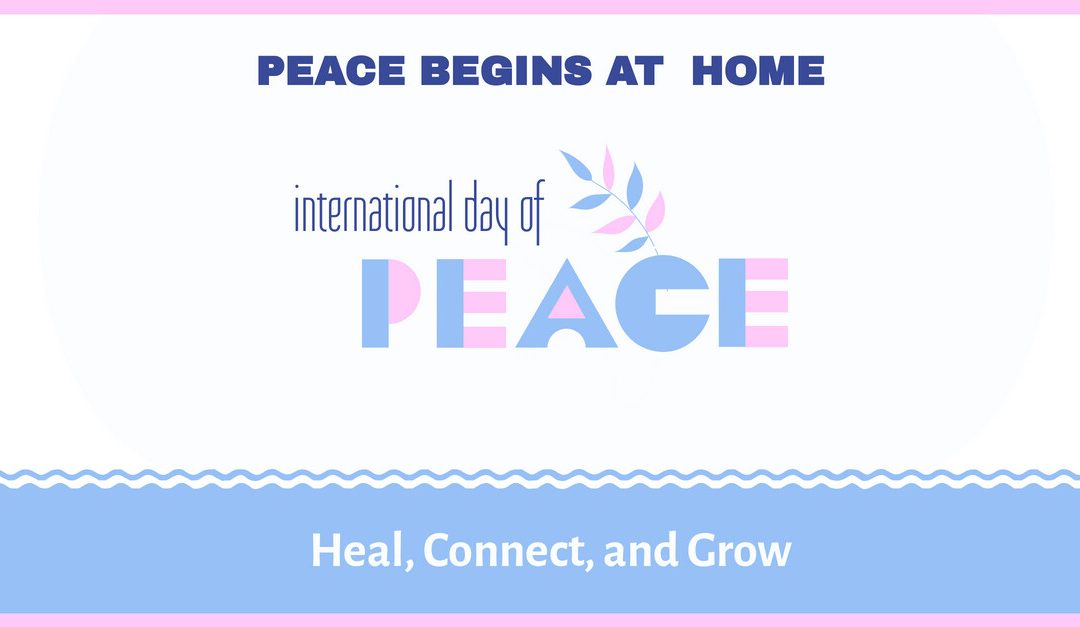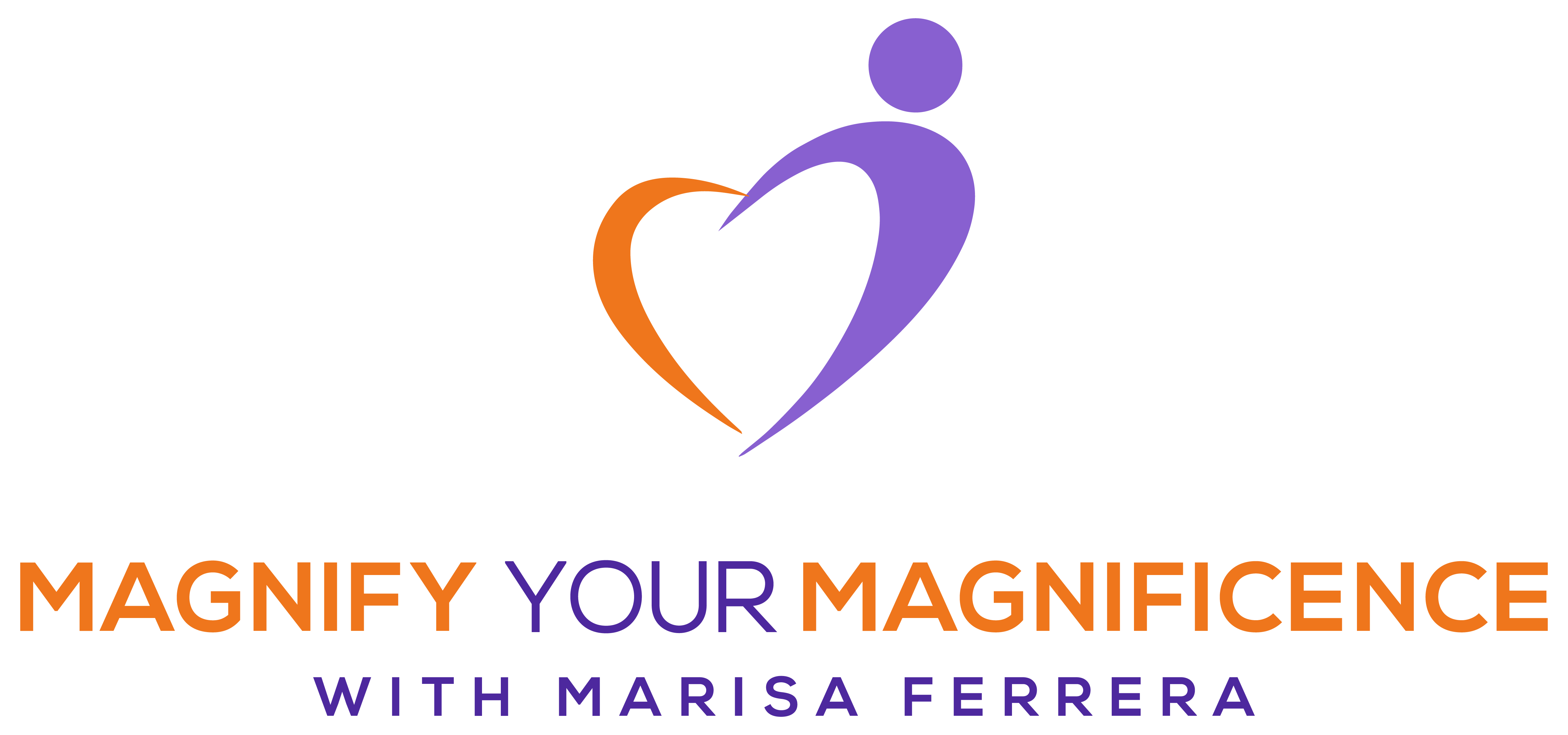
by Marisa Ferrera | Mar 20, 2025 | Relationships, Special Days
[image created by ChatGPT]
Today, on International Day of Happiness, we are invited to reflect on what truly brings us joy—not fleeting moments of pleasure, but the kind of deep, soul-nourishing happiness that comes from authentic connection, peace within ourselves, and harmonious relationships with those we love.
Yet for many, family relationships—especially with adult family members—can feel more like a source of stress and frustration than joy. You may find yourself triggered by old wounds, caught in cycles of conflict, or feeling unseen and unheard. And while it can feel easier to avoid or suppress the pain, I invite you to see today as an opportunity to reclaim your power and your peace by taking steps toward healing and transforming these relationships.
Because true happiness begins with inner peace—and from that place, we can create ripples of healing and love that extend far beyond ourselves.
The Path to Happiness Begins Within
The first step in improving any challenging relationship is to remember this truth: You are not powerless. Even if you cannot change another person, you can always choose how you respond. You can choose to rise above the drama and act from a place of love, clarity, and healthy boundaries.
So much of our pain in family relationships comes from holding onto unmet expectations, unhealed wounds, and the hope that others will behave the way we want them to. But when we shift our focus inward, we find the freedom to release what no longer serves us and step into the magnificence of who we truly are—a divine being, worthy of love, respect, and joy.
Three Soulful Steps to Heal and Enhance Family Relationships
1. Honor Your Feelings, Without Letting Them Control You
Your emotions are sacred messengers. When you feel anger, sadness, or frustration in a family dynamic, pause and ask yourself: What is this feeling showing me about what I need or value?
Instead of reacting from a triggered place, take time to breathe, reflect, and respond from your higher self. This may mean stepping away for a moment, journaling your thoughts, or speaking your truth with love when the time is right.
Remember: You have the right to feel everything—and the power to choose peace.
2. Create Loving Boundaries That Reflect Your Worth
Many women I work with struggle to create boundaries because they fear rejection or feel guilty. But healthy boundaries are not walls—they are bridges that create safety, clarity, and respect in our relationships.
Ask yourself:
- What am I no longer willing to tolerate?
- How can I express my needs with compassion and firmness?
- What boundaries will support my happiness and well-being?
Know that when you honor yourself, you invite others to meet you at a higher level of love and respect.
3. Choose Compassion Over Judgment
Every family member is on their own soul journey, shaped by their wounds, fears, and limitations. While this doesn’t excuse harmful behavior, it can help you to release resentment and move into a space of compassionate understanding.
Compassion doesn’t mean you condone their actions—it means you free yourself from the burden of anger and choose love over bitterness. As you shift your energy, you create space for healing and even the possibility of reconciliation.
A Gift to Yourself and Your Family
Healing family relationships is not always easy, but it is one of the most profound gifts you can give yourself—and those you love. It opens the door to true happiness rooted in peace, empowerment, and connection.
Today, let’s celebrate International Day of Happiness by making a commitment to ourselves:
- To choose peace over conflict.
- To honor our needs and our voice.
- To release what no longer serves us and invite love to guide our path.
No matter how challenging your family dynamics may be, remember this: You have the power to magnify your magnificence, heal your heart, and create relationships that uplift your spirit.

by Marisa Ferrera | Jan 1, 2025 | Relationships, Special Days
As the New Year approaches, there’s a certain magic in the air. It’s a time of reflection, hope, and renewal—a perfect opportunity to set meaningful intentions that align with your heart’s deepest desires. For many women, the start of a new year brings the hope of mending broken connections, healing old wounds, and creating healthier, more fulfilling relationships with family members.
If you’ve been struggling with a dysfunctional family relationship, you’re not alone. Family dynamics can be one of the most challenging areas of life to navigate. Yet, they also hold incredible potential for growth, healing, and transformation. As you step into 2025, consider setting an intention to heal from the pain of the past and create healthier dynamics with the people who matter most to you.
Here are five empowering steps to guide you on this journey:
1. Reflect on Your Relationship Patterns
Healing begins with awareness. Take some time to journal about the family relationships that feel difficult or painful. What patterns do you notice? Are there recurring conflicts, unspoken resentments, or unhealthy boundaries?
Be compassionate with yourself as you explore these dynamics. Remember, awareness is not about assigning blame but understanding where things stand so you can move forward with clarity.
2. Set a Clear and Compassionate Intention
Intentions are powerful because they focus your energy and attention. Instead of making a resolution like, “I will fix my relationship with my mother,” try setting a more open and compassionate intention, such as, “I will work on creating healthier boundaries and fostering mutual understanding in my family relationships.”
This subtle shift allows space for growth and healing without placing pressure on achieving a specific outcome.
3. Learn and Practice Healthy Boundaries
Boundaries are the foundation of any healthy relationship. They protect your well-being and communicate your needs clearly and respectfully. If setting boundaries feels challenging, start small. Practice saying “no” to things that don’t serve you, and express your feelings in ways that honor both yourself and the other person.
Remember, boundaries are not about controlling others; they’re about taking responsibility for your own emotional health.
4. Transform Conflict into Opportunities for Growth
Conflict doesn’t have to be destructive. When approached with intention, it can become a doorway to deeper understanding and connection. Instead of avoiding difficult conversations, learn to navigate them with empathy and curiosity.
The next time a disagreement arises, pause and ask yourself, “What is this conflict teaching me about myself and this relationship?” This mindset shift can open new possibilities for healing.
5. Seek Support and Resources
You don’t have to go through this journey alone. Whether it’s through a trusted friend, therapist, coach, or support group, having a safe space to share your experiences can make all the difference. There are also many books, workshops, and online resources available to help you build the skills needed to heal and grow.
Here are a couple of FREE resources to get you started:
Create Healthy Boundaries Guide
Resolve Conflicts Peacefully Guide
A Heartfelt Invitation for 2025
As you set your intentions for the year ahead, remember that healing is a journey, not a destination. Be gentle with yourself and celebrate every small step forward. Even the act of setting this intention is a powerful declaration of your commitment to growth and self-love.
Imagine what your life could look like at the end of 2025: healthier boundaries, deeper connections, and the freedom to show up authentically in your family relationships. This vision is within reach, and it all begins with the intention you set today.
Here’s to a year of healing, growth, and transformation. May 2025 be the year you reclaim your power, nurture your heart, and create the loving, supportive family dynamics you deserve.
If you’re committed to healing your dysfunctional family relationships this year, I invite you to schedule a complimentary relationship renewal discovery session with me. Let’s explore together whether or not we’re a good fit for working together.

by Marisa Ferrera | Sep 21, 2024 | Relationships, Special Days
On International Peace Day, we reflect on the power of peace in the world around us. Yet, what if the journey toward global peace begins within our own hearts, homes, and families? Family relationships, with all their history, emotions, and complexities, can sometimes feel like the last place where peace is possible. Yet, these relationships are the most important for creating the deep healing that the world so desperately needs.
As an empowerment coach for heart-centered women, I believe that every conflict is an opportunity to heal, deepen connections, and create more peace—not only in our families but in the world as a whole.
The Ripple Effect of Family Peace
When we experience peace in our closest relationships, it ripples out into all areas of our lives. A family unit that fosters understanding, empathy, and love can influence communities, workplaces, and society at large. Every peaceful resolution to a family conflict contributes to a larger wave of global harmony.
If we each take responsibility for resolving conflicts within our families, imagine the potential impact on our neighborhoods, cities, and even across nations. By creating more peace within our personal relationships, we can play a vital role in fostering a more peaceful world.
Proven Strategies to Resolve Conflict Peacefully
While conflict is inevitable, it doesn’t have to create separation or pain. In fact, conflict can be a gateway to greater understanding, trust, and connection. Here are some proven strategies to help you resolve conflict peacefully in your family relationships:
1. Practice Active Listening
One of the most powerful ways to create peace is through active listening. When emotions run high, it’s easy to focus on our own feelings and responses, but true understanding comes when we fully hear and acknowledge the other person’s perspective.
How to do it: Stay present during conversations. Reflect back on what the other person is saying without interrupting or jumping to conclusions. Ask clarifying questions, and be genuinely curious about their feelings.
2. Approach with Compassion, Not Judgment
In moments of conflict, it’s easy to get defensive and assign blame. However, when we approach others with compassion, we can soften the space for dialogue and healing.
How to do it: Before responding in a heated moment, take a breath and ask yourself, “What might this person be feeling? What hurt might be underlying their words?” This shift in perspective can transform conflict into a conversation rooted in empathy.
3. Own Your Feelings with “I” Statements
Using “I” statements helps take responsibility for your emotions without blaming others. This simple shift in language fosters a safer environment for honest communication.
How to do it: Instead of saying, “You never listen to me,” rephrase it to, “I feel unheard when we have these conversations.” This subtle change can prevent defensiveness and open the door to understanding.
4. Pause Before Reacting
In the heat of conflict, emotions can overwhelm rational thought. Learning to pause before reacting helps create space for a more thoughtful, loving response.
How to do it: Practice taking a pause—whether for a few seconds or longer—when you feel triggered. This gives you time to calm down, reflect on your emotions, and respond in a way that aligns with your values of peace and connection.
5. Focus on Solutions, Not Problems
It’s easy to dwell on the hurt or frustration in a conflict, but true peace comes when we shift our focus toward finding solutions together.
How to do it: Ask the other person what a solution might look like for them and share your own ideas. Collaborating on a resolution strengthens the bond and ensures that both parties feel heard and valued.
How Family Peace Leads to Global Peace
When we model peaceful conflict resolution within our families, we demonstrate to others—especially our children—the importance of empathy, understanding, and cooperation. Children raised in peaceful homes grow up to be compassionate adults who bring those same qualities into their relationships, workplaces, and communities.
By healing the divides in our own families, we contribute to healing the divides in society. Each peaceful interaction is like planting a seed of love, kindness, and understanding that can grow into something much larger.
A Free Gift: Resolve Conflict Peacefully
To support you on your journey toward more peaceful family relationships, I’m offering a free guide called “Resolve Conflict Peacefully.” This guide will walk you through 10 Simple Steps for dealing with conflict in ways that will stop conflict from escalating and lead to a peaceful resolution. Whether you’re in the midst of a challenging situation or simply want to strengthen your relationships, this guide will be an invaluable resource.
To request your free guide, simply click here and begin your journey to creating more peace, both within your family and in the world around you.
Conclusion
As we celebrate International Peace Day, let’s remember that peace begins at home. By choosing love, empathy, and understanding in our family relationships, we contribute to a more peaceful world. When we heal our hearts and our homes, we heal the world.
Let’s work together to make family peace a reality—because every step toward peace in our relationships is a step toward global harmony.
If you’re ready to transform your challenging family relationships into sources of love and harmony, I invite you to schedule a complimentary Relationship Renewal Discovery Session. Together, we can create peace, one relationship at a time.




